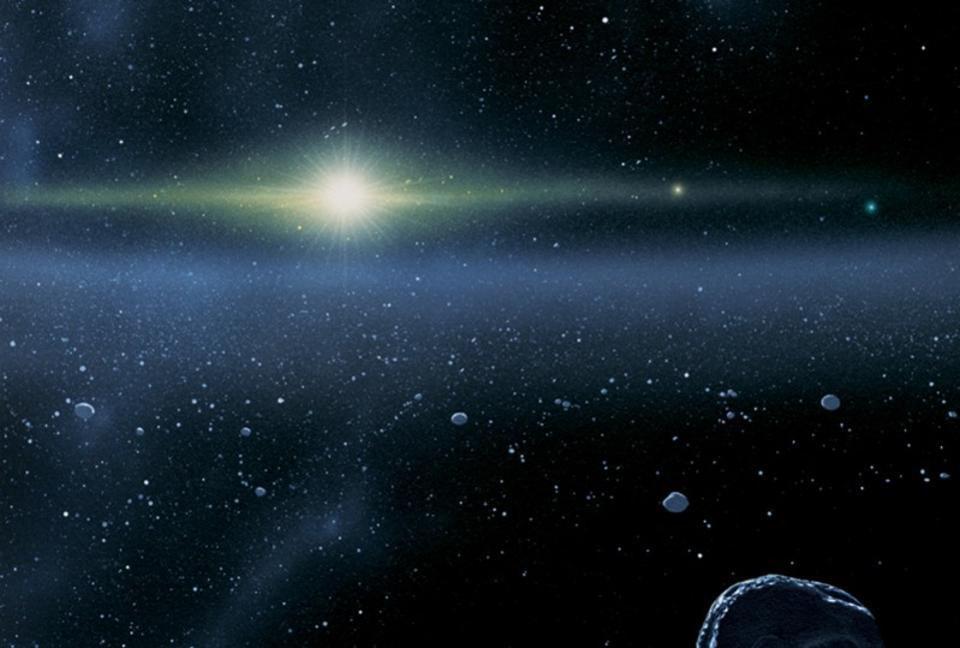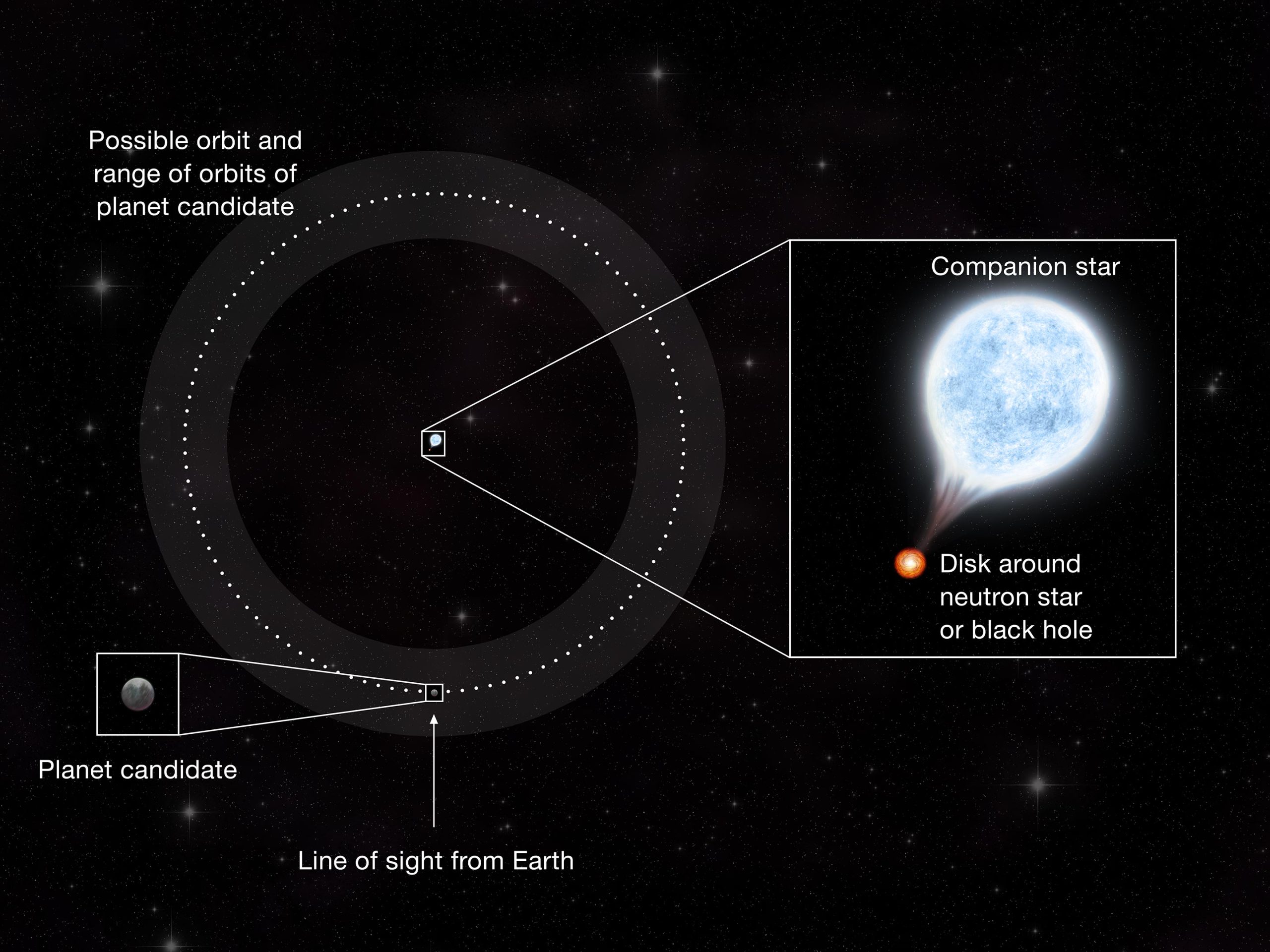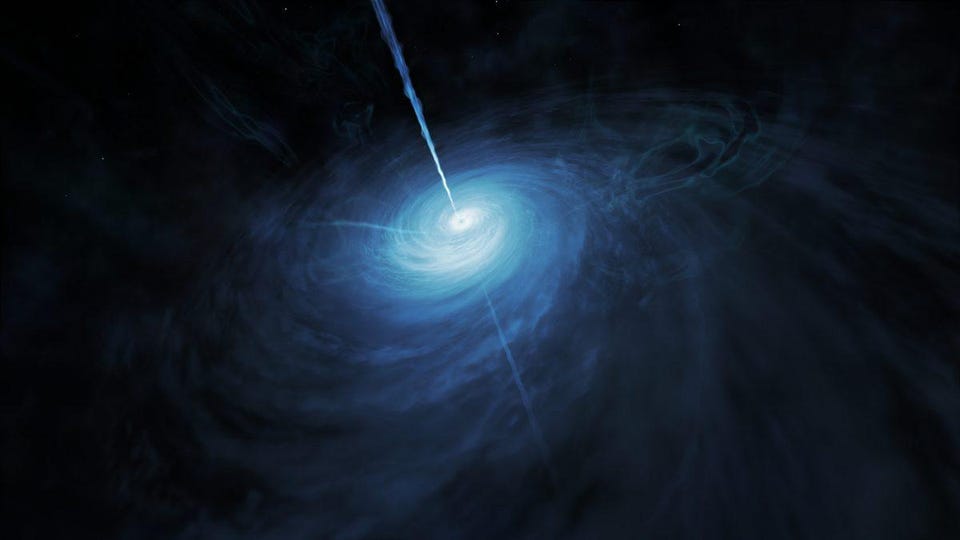‘Oumuamua wasn’t an alien spacecraft, and ignoring the science can’t make it so
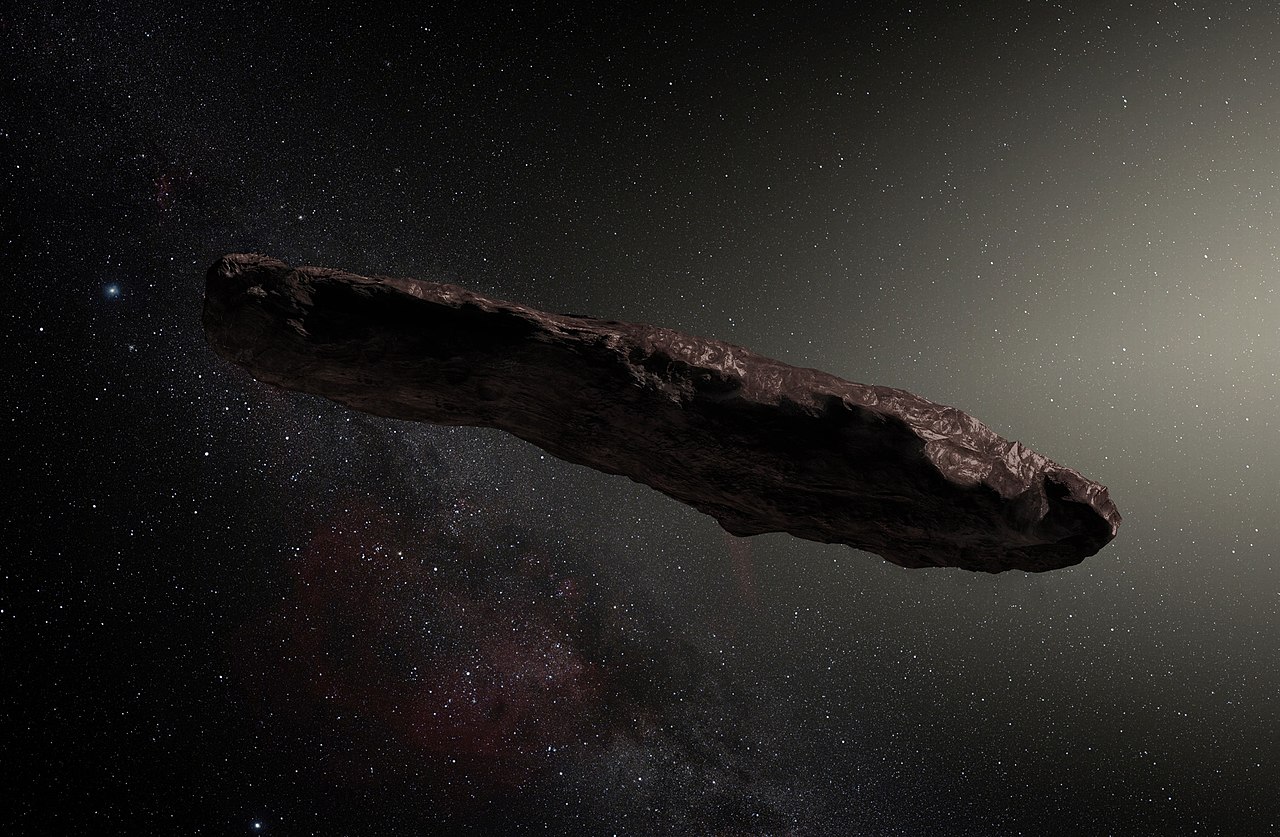
- In 2017, the first object of interstellar origin was spotted in our Solar System: ‘Oumuamua.
- While one team generated publicity for suggesting it was an alien spacecraft, the natural explanation of a nitrogen iceberg fits much better.
- Despite the detractions of the alien spacecraft proponents, the science does not back up their assertions; ‘Oumuamua appears perfectly natural.
In 2017, scientists discovered an object in our Solar System that was unlike anything else we’d ever seen before. Whereas all the other bodies in our own cosmic backyard — planets, moons, comets, asteroids, Kuiper belt objects, and more — had properties that indicated they originated from within our own Solar System, this new object did not. For the first time, based on the observed trajectory of this object, we had found something that originated from beyond our Solar System and just happened to be passing through our local neighborhood. Named ‘Oumuamua, the Hawaiian word for “messenger from the distant past,” it had a series of curious properties that no other observed object had possessed.
Since that discovery, a debate has raged within the astronomical community: Just what was the nature of this object that passed through? Could it have been a heavily weathered asteroid, misshapen and tumbling from its journey through interplanetary space? Could it be an enormous ice fragment made of some volatile material, such as hydrogen or nitrogen? Could it be something even more exotic, like a primordial object that was tidally disrupted? Or is every conceivable natural explanation dissatisfying, opening the door to something seemingly implausible, like that ‘Oumuamua is an alien spacecraft? Despite all that’s unknown about ‘Oumuamua, one explanation stands head and shoulders above the rest. And no, it isn’t aliens. Here’s why.
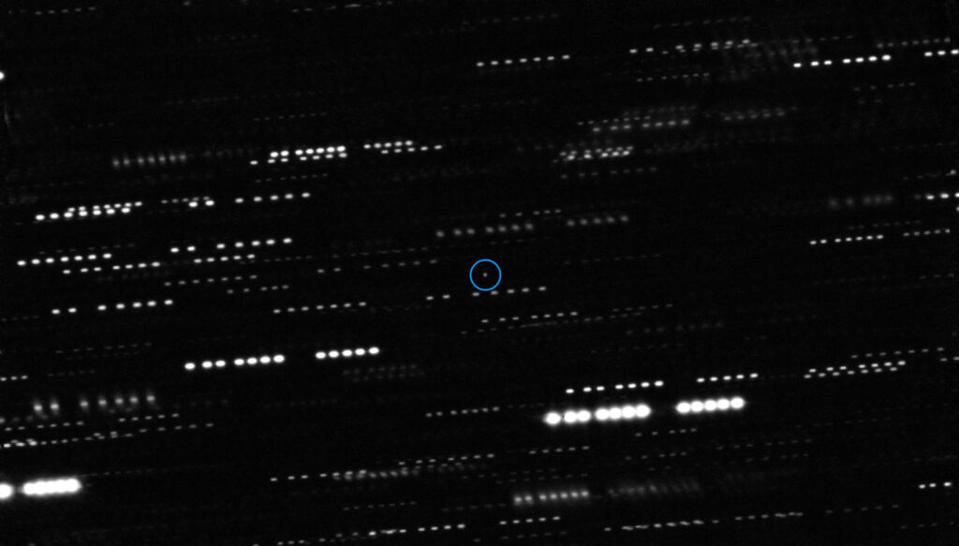
Credit: ESO/K. Meech et al., Nature, 2017
The facts about ‘Oumuamua
When it comes to any scientific question, the first thing of paramount importance is to get our facts in order: the basics of what everyone can agree is actually true. Back in 2017, a telescope that automatically, systematically, and repeatedly surveys as much of the sky as possible — the Pan-STARRS telescope located at the highest point on the island of Maui — discovered a point of light that moved rapidly against the otherwise static, fixed background of stars. Although many objects within the Solar System possessed similar properties, this object had something unique about it: the way its position changed over time indicated that it could not have originated within our Solar System. Its orbit was too eccentric and it was moving far too quickly to be explained away as an asteroid, centaur, Kuiper belt, or even an Oort cloud object.
In fact, prior to the 2017 discover of ‘Oumuamua, every Solar System object we found was either in a stable circular or elliptical orbit around the Sun (with an eccentricity less than 1), or else was only very slightly hyperbolic, with an eccentricity greater than 1. In fact, the most eccentric orbit ever previously discovered — and that was possessed by an object that received a gravitational slingshot from Jupiter — had an eccentricity of 1.06, still barely greater than 1. Almost every object that would be gravitationally ejected from the Solar System would move at less than ~1 km/s when it reached interstellar space, barely escaping the Sun’s pull. That previously most-eccentric object will be moving at ~3.8 km/s, which is about the maximum an object of Solar System origin could have.

Credit: NASA/JPL-Caltech
But not ‘Oumuamua. Observations indicated:
- its eccentricity was 1.2
- its speed when it reaches interstellar space will be ~26 km/s
- it had no close encounters with any massive planets in our Solar System
Although we initially didn’t know whether to classify it as a comet or an asteroid, it swiftly became clear this was instead a fundamentally new type of object: one that was an interloper from far away, somewhere in interstellar space. It came into our Solar System at a remarkable speed, was redirected by the Sun, and was only discovered in the data once it was already on its way out of the Solar System as it happened to pass close by the Earth: just 23,000,000 kilometers away. Immediately after its discovery, we observed it with every relevant observatory that could image it as it sped away.
Here were some other bizarre properties possessed by ‘Oumuamua:
- It was a small object: just about 100 meters long.
- It was very faint, indicating that even with its small size, it wasn’t particularly reflective.
- It was red in color, similar to the Trojan asteroids we find leading and trailing Jupiter in its orbit.
- It showed no atomic or molecular absorption or emission features, indicating that dust and ions weren’t being offgassed.
- Every 3.6 hours, approximately, the object varied in brightness by up to a factor of ~15: an unprecedentedly large amount.
Altogether, these factors painted a remarkable and novel picture.
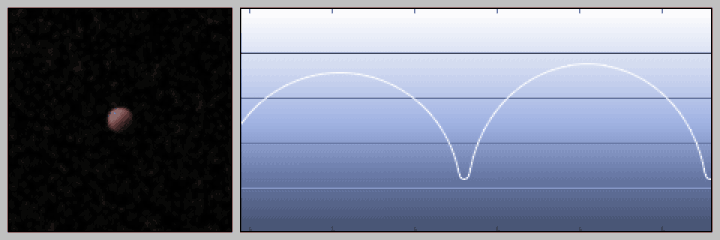
In terms of its composition, ‘Oumuamua had nothing in common with the icy bodies we know of; it was completely the wrong color. The varying brightness indicated that this object was either extremely elongated, like a cigar, or extremely flat, like a pancake, and that it must be tumbling irregularly regardless of which explanation were true. But there was one more factor that came into play, which perhaps defied conventional explanation more than any other: As ‘Oumuamua sped away from the Sun, it appeared to move slightly differently than we’d predict from the law of gravity alone, as though some yet-unseen factor were causing it to accelerate. The extra acceleration was tiny, at just ~5 microns per second2, or 1 part in 2,000,000 of the acceleration due to gravity at Earth’s surface.
The most common explanation for an additional acceleration in a Solar System object is when the object is heated unevenly by the Sun, and it begins outgassing preferentially in one direction over another. However, no such gases or ions were detected, nor did the object display a coma, which icy bodies would be expected to possess. Given ‘Oumuamua’s tiny size and great distance, we couldn’t rule out that it did, in fact, possess a diffuse jet of ejecta below the limit of what we could detect.
Any individual object that traveled through the galaxy would only pass as close to a star as ‘Oumuamua did to our Sun every ~100 trillion years, or about 8000 times the present age of the Universe. Either we got extremely lucky, or there must be an enormous population of interstellar objects such as this — perhaps as many as 1025 — roving through the Milky Way galaxy.
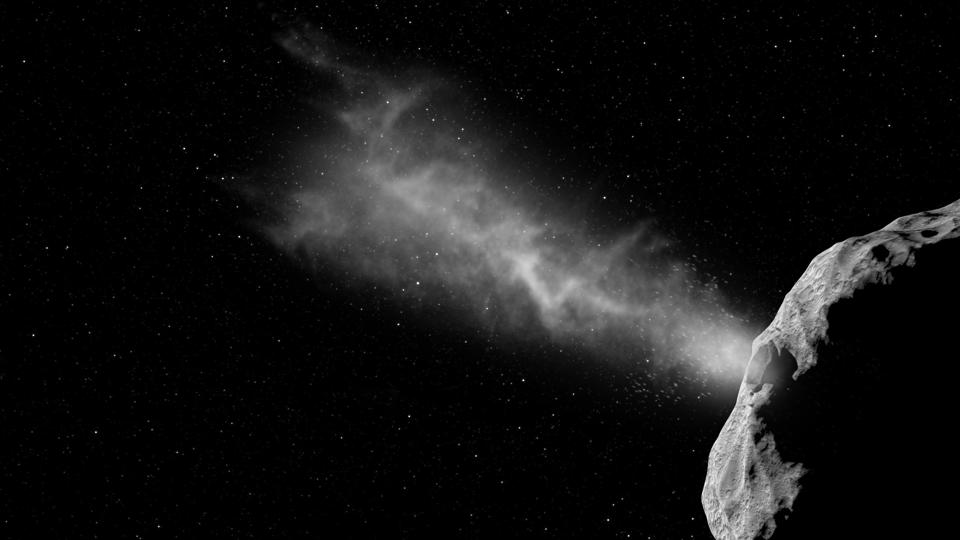
The possible explanations
When you’ve never observed an object or phenomenon like one you’re seeing for the first time, it’s important to consider every conceivable option that could have caused it. But just as importantly, you must consider the natural phenomena that you’d expect to occur based on the known laws of nature before resorting to any unnatural or supernatural explanations. That said, there have been a number of potential explanations put forth to explain the full suite of what was observed when it came to ‘Oumuamua, but they have to explain all of the data concerning it simultaneously.
The brightness variations, for example, could have been produced by an elongated, tumbling, cigar-like object; a flat, thin, tumbling, pancake-like object; or a spheroidal, multi-toned, spinning object, like Saturn’s half-darkened moon Iapetus. These are the likely explanations worth exploring further as far as ‘Oumuamua’s geometry is concerned.
‘Oumuamua was a similar color to many of the asteroids we observe, but the lack of outgassing disfavors an asteroidal nature to it. Asteroids tend to outgas only if they have volatile molecules on their surface, and the amount of outgassing required to produce the observed accelerations are right at the limits of what our instruments should have seen. And yet they saw none: No dust, no water, no carbon dioxide or carbon monoxide — all of which are found abundantly on both comets and asteroids in our Solar System. Whatever ‘Oumuamua is, it isn’t something we’re intimately familiar with firsthand.

Credit: Breakthrough Starshot
Perhaps because of these reasons, Harvard professor Avi Loeb, along with his collaborator Shmuel Bialy, radically proposed that ‘Oumuamua wasn’t a naturally occurring object, but rather a spacecraft created by aliens. Specifically, it was suspiciously similar to the novel idea of a light-sail, where a large-area but very thin, light, and highly reflective surface would be used to reflect a collimated set of lasers, with the intent of accelerating it to tremendous speeds for an interstellar journey. As promoted by the Breakthrough Starshot initiative, its proponents contend that it could reach speeds of ~20% the speed of light under ideal conditions, making it an ideal candidate for traversing the distance between stars in a single human lifetime.
That idea is fraught with problems that have yet to be overcome, including:
- the insufficient reflectivity of all known materials
- the inability to stably orient and aim the sail during acceleration
- the inability to protect the sail from the dust and gas of the interstellar medium
What’s more, the idea has three bigger problems associated with it for this application. The first is that this object isn’t moving with the types of speeds even predicted by a light-sail, but rather moves at mundane speeds: the same speeds at which other stars and interstellar objects are observed to naturally travel. The second is that it doesn’t exhibit the properties that a light-sail, which would’ve spent a long period of time traveling through the interstellar medium, ought to have. But the third, and perhaps most important, concern is that there’s no comparison to the expected abundance of naturally occurring objects that could cause such a signal. Despite the fact that we don’t possess such objects in our Solar System, they do naturally occur.
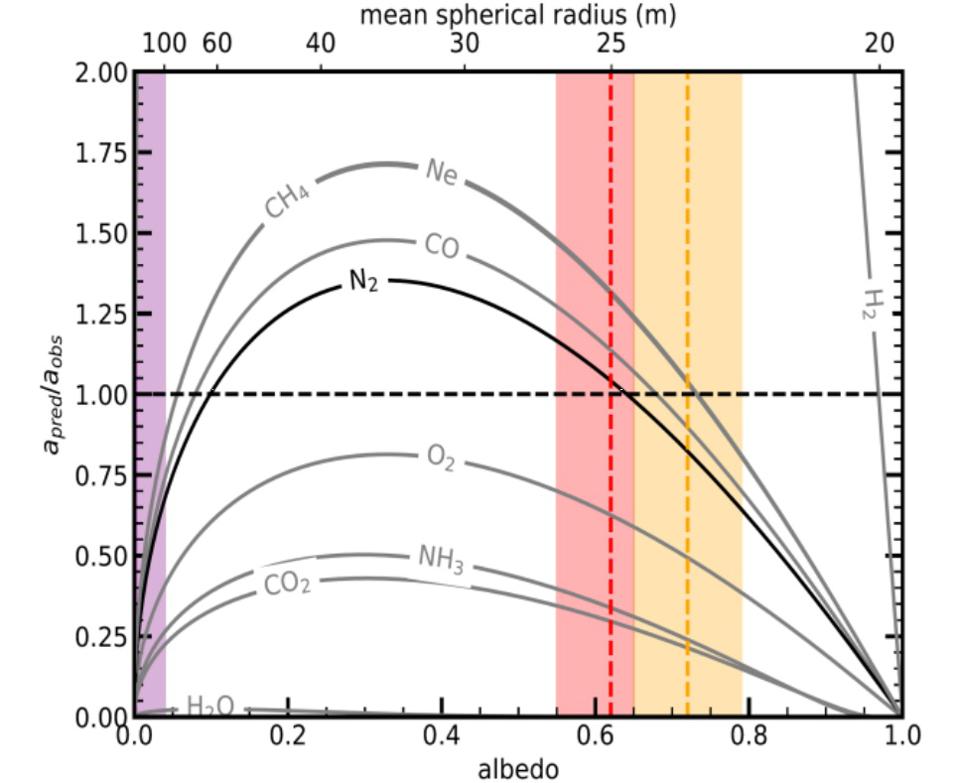
In May of 2020, Daryl Seligman and Greg Laughlin calculated that if a different volatile, solid molecular hydrogen, covered as little as 6% of ‘Oumuamua’s surface, the sublimation of those ices could have caused the observed acceleration, all while evading detection by our full suite of instruments. The idea didn’t quite work in detail — hydrogen ice sublimates too easily, quickly, and at too low of a temperature, even in interstellar space — but it possessed a seed of an idea that was worth investigating further. If a different abundant, volatile molecule covered the surface of a naturally occurring object, and that volatile would also evade detection by our instruments, perhaps that could provide the needed physical explanation for the nature and origin of ‘Oumuamua.
In February of 2021, Alan Jackson and Steve Desch put the pieces together in the most compelling way to date. They considered other volatiles, and in particular, molecular nitrogen: N2. Nitrogen ice exists in great abundance in the outer Solar System, including on Pluto and Triton, the two largest known bodies to originate in the Kuiper belt. Nitrogen ices cover large portions of Kuiper belt objects’ surfaces, reflect about ⅔ of incident sunlight, and form layers that are many kilometers thick. It’s thought that nitrogen ices should be abundant in the outskirts of practically every star system that forms in modern times, and one of the things that copiously occurs in these outskirts, importantly, is collisions between the massive bodies that are present there. The moons of Pluto, Haumea, and Eris, for example, are all thought to have arisen from giant impacts, just as a giant impact is theorized to have formed Earth’s Moon.
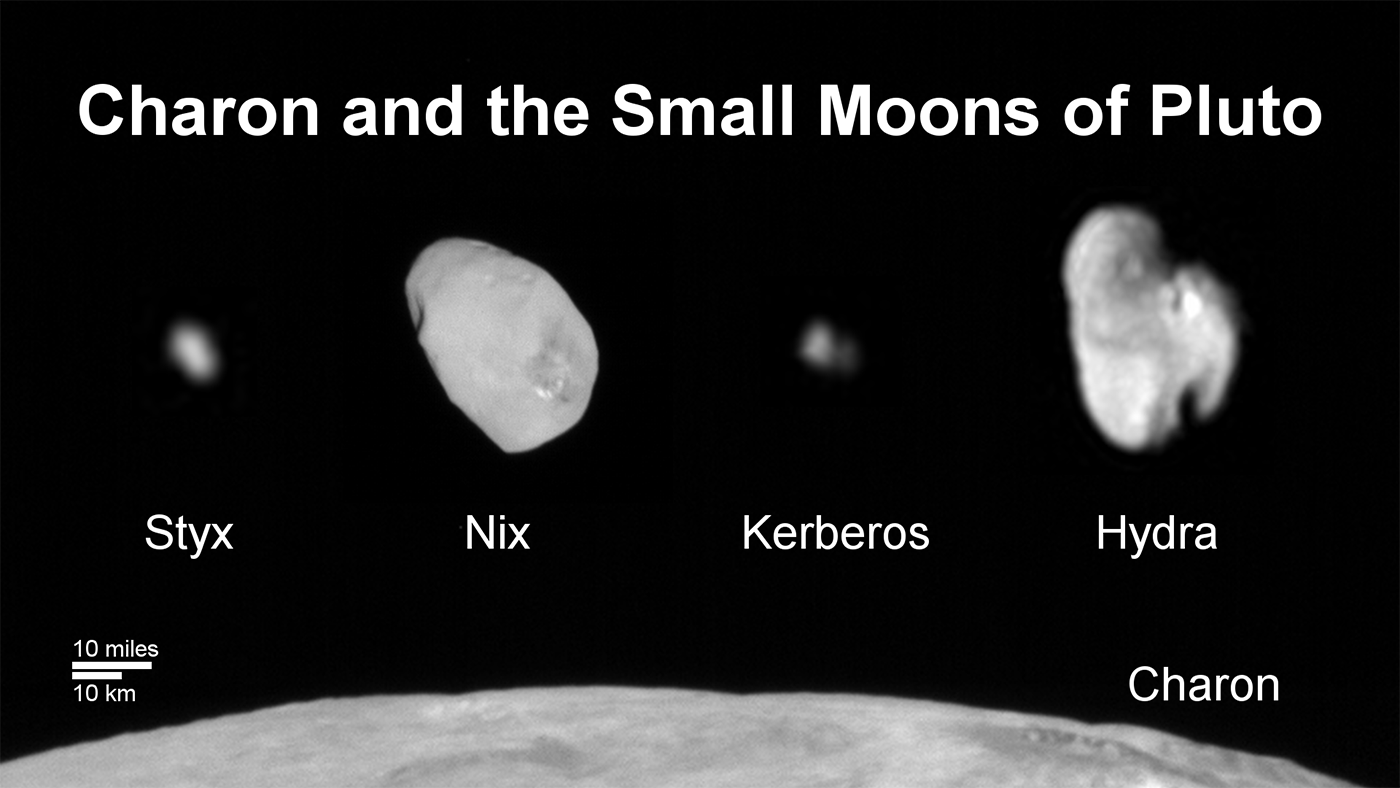
The predicted abundance of “nitrogen icebergs”
Since ‘Oumuamua is long gone, the only course of action we can now take in the quest to determine its nature is to look for and characterize additional interstellar objects and see if others are similar, and then to calculate, as best as theoretically possible, the expected abundance of these objects from the formation of stellar systems throughout the Milky Way. That’s precisely what Jackson and Desch did in a paper published in March of 2021, determining that:
- a total of one quadrillion (1015) icy fragments will be produced for every stellar system like our own
- about one-third of the mass of those fragments will be in the form of nitrogen ice
- the majority of objects below one kilometer in size will be dominated by these fragments
- these fragments should only erode after ~500 million years
- about 4% of all interstellar bodies are likely nitrogen-ice dominated fragments
It’s an idea that has quickly become the leading hypothesis concerning ‘Oumuamua’s origin, and represents an incredibly abundant population of objects that — based solely on the physics and dynamics of objects known to exist in the abundances they’re expected to exist — may have finally revealed themselves to us. Most importantly, irrespective of any other ideas that one may have, this population of objects must be reckoned with. With improved telescope technology, we may yet find nitrogen ice fragments in the extreme outskirts of our outer Solar System, as approximately 0.1% of all Oort cloud objects are estimated to be these fragments.
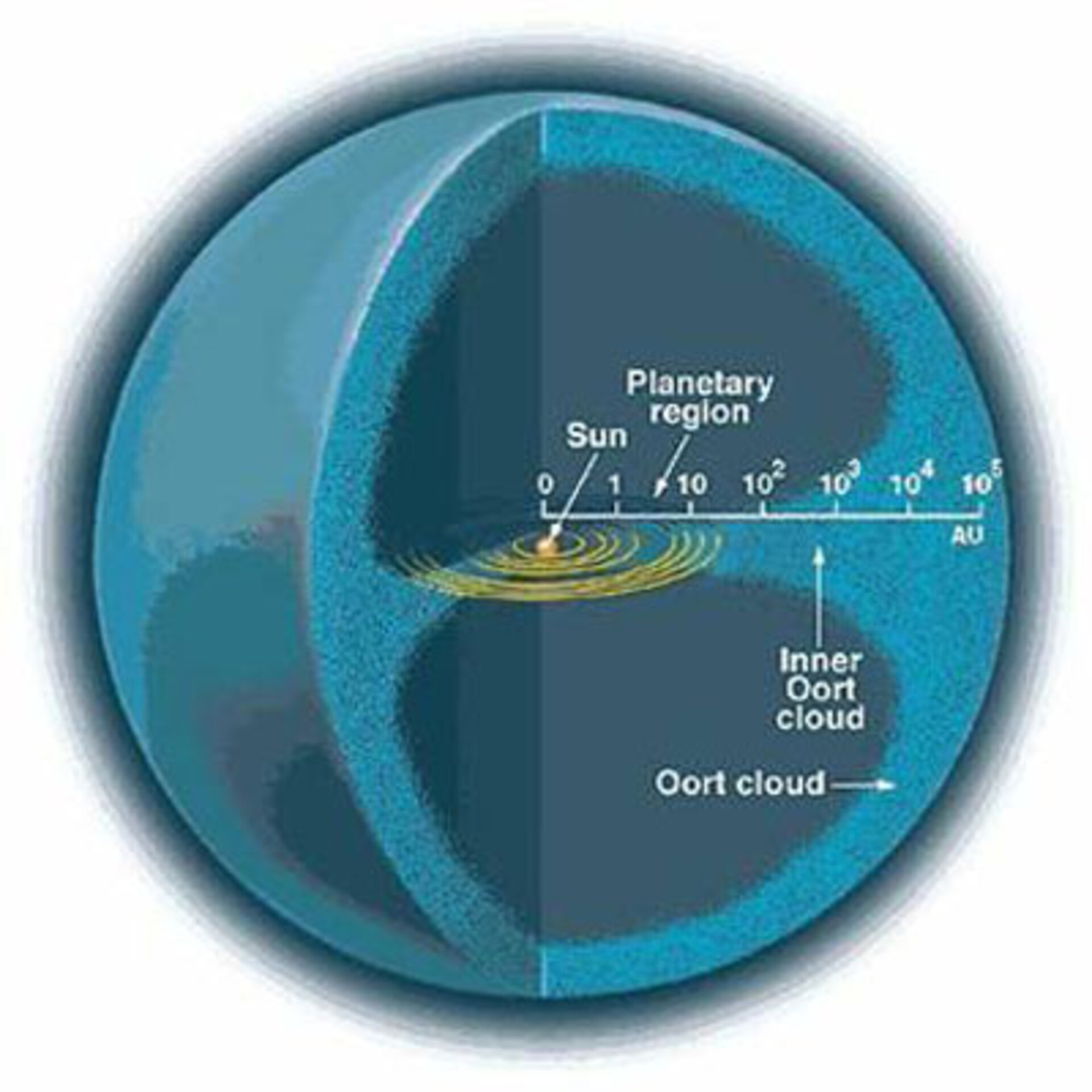
Jackson and Desch, in their analysis, were extremely careful to base their estimates for the abundance of nitrogen ice fragments that ought to exist based on the full suite of available data. To answer the question of “how many ‘Oumuamuas ought to be out there?” they went to the discovery paper of the object itself, which leveraged the entirety of the Pan-STARRS datasets. They calculate, in their work, that if you considered how many cubic astronomical units (a box of the Earth-Sun distance on all sides) you needed to contain one ‘Oumuamua-like object, on average you’d need a little over 6,000 of them. This is precisely within the 90% confidence interval of the range of such objects determined to actually exist from the ‘Oumuamua discovery paper.
But rather than conducting science the way it ought to be conducted, where we recognize our own limited knowledge and take advantage of the hard work and expertise of our competent colleagues, Loeb and his undergraduate student, Amir Siraj, decided to ignore the methodology of Jackson and Desch. Instead, they chose to make their own estimates, choosing indefensible values from partial and arguably cherry-picked data. The abundance they infer is between scores and hundreds of times too large, claiming that there ought to be an ‘Oumuamua-like object for every ~10 cubic astronomical units. They then argue that the immensity of the nitrogen demanded by their estimates is absurd (it is, because they set up a scientific strawman), drawing the conclusion that the nitrogen iceberg scenario is untenable.
Despite the fact that Loeb and Siraj continue to make headlines with their assertions, with Siraj calling the nitrogen ice hypothesis “untenable” and “off the table,” the copious flaws and lazy analysis of their work renders it thoroughly unconvincing to all but the most uncritical onlookers.
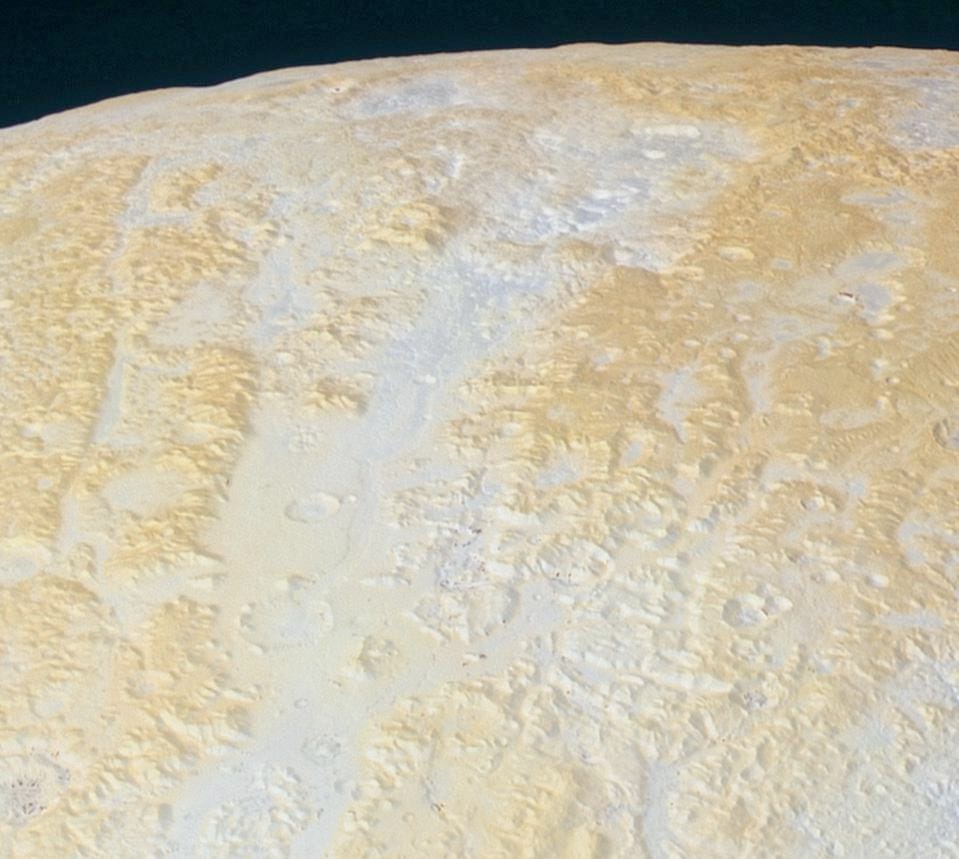
It’s very clear that whatever the true nature of ‘Oumuamua is, it’s unlike any other object we’ve ever seen. There has since been a second interstellar object observed to enter into our Solar System, but that one was large, volatile-rich, and comet-like, and which never approached particularly close to the Earth. There are clearly large populations of objects that originate from other stellar systems traversing the interstellar medium, and it’s eminently probable that as our observational capabilities improve, we will begin accumulating large sets of data about the types of objects that pass through our Solar System, despite originating elsewhere in our galaxy.
Among them will certainly be more ‘Oumuamua-like objects, where the only naturally occurring explanation that’s consistent with the data is a nitrogen ice fragment. Sadly, there will always be scientists in the field who close their minds to the high-quality work of their colleagues and instead employ the most dangerous mindset a scientist can possess: “Only I am capable of performing this analysis correctly.” In particular, when you’re working outside of your field of expertise, you’re very likely to make mistakes in ways you’re not even aware of. The only successful path forward is to be humble enough to face up to your errors, admit them, correct them, and learn from them.
If you don’t, you’ll not only continue to be misinformed yourself, but you’re very likely to spread that misinformation to others: students, journalists, and the general public alike. Fortunately, science does not progress by public opinion, but rather by what the evidence supports. At this point in time, the nitrogen iceberg is by far the best-supported hypothesis for the origin of ‘Oumuamua. With superior data coming once the Large Synoptic Survey Telescope at the Vera Rubin Observatory coming online, we may soon have a much more definitive picture of precisely what’s out there flying through the Milky Way’s interstellar space.
